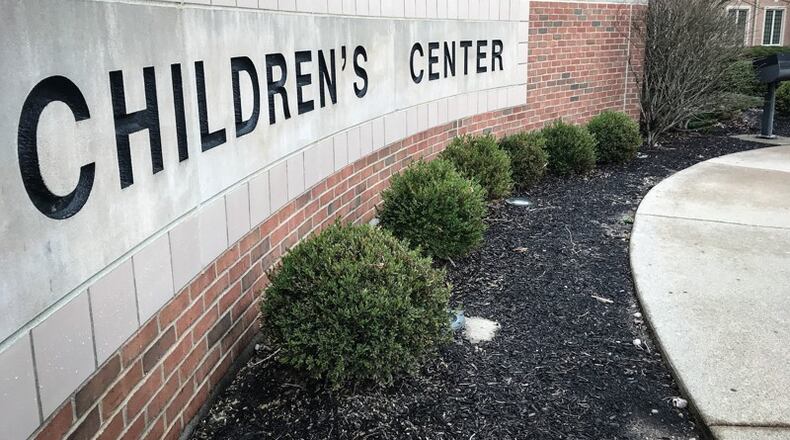“There’s a variety of factors,” said Greene County Job and Family Services Director Beth Rubin. “Sometimes parents are refusing to pick up their children (from agency custody), but those aren’t necessarily the majority of the cases. And when that happens, it’s often because there is undiagnosed or untreated mental health (issues) that the parents are not equipped to deal with.”
Symptoms of these untreated mental health conditions can result in suicidal or homicidal ideation, such that parents or guardians feel that they or their other children are in danger if they allow that child to come home.
“Most of the time, when we have a situation where a parent does or a guardian does not want to pick up their child from detention...it’s usually a domestic violence case,” said Greene County Juvenile Court Judge Amy Lewis.
‘System of last resort’
It is common that kids who are involved with children services are also involved with the juvenile court system. A 2016 study in the Children and Youth Services Review found 92% of crossover children are first involved in the child welfare system.
“Most often, the behavior tends to be violence within the home environment,” said Clark County Juvenile Court Judge Katrine Lancaster, adding that violence also occurs at school, and more frequently, towards law enforcement who are called to intervene.
“Most lack the ability to regulate their emotions in a healthy manner. Some have significant persistent and severe mental health diagnosis — though not all — that requires a high level of care management that is not easily available in this community,” Lancaster said.
2023 data from the Ohio Department of Job and Family Services shows that, of youth in children services custody on any given day, 414 children, or 3% of cases, were taken into custody due to delinquency or unruliness, and 15%, or 2,256 kids, entered as “dependent,” meaning generally that the child has been abandoned, abused, or otherwise has no parent or guardian that is adequately able to care for them.
The Public Children Services Association of Ohio has called their county offices the “system of last resort” for these children, in written testimony to Ohio’s Juvenile Justice Working Group in February.
Local agencies
Greene County Children Services had 57 children in custody in October. Over the course of a year, the county has had over 100 children in custody, many of those placed in substitute care.
In 2023, four children came into Greene County custody through delinquency involvement, representing about 8% of new cases. Through just over half of 2024, six children came into Greene County Children Services custody through delinquency involvement, about 16% of new cases.
While the number of children in agency custody has decreased over the last few years, both in Greene County and across the state, that’s not necessarily because things are better for kids, Rubin said. County resources are being directed towards fewer kids, with much greater behavioral, emotional, and mental health problems.
“Child welfare agencies across the state are dealing with more behaviors that are complex to manage and require specialized placements,” said Craig Rickett, associate director of the Montgomery County Children Services Division.
“In addition, the behaviors have also escalated for the youths. When the behaviors go unchecked, it can lead to multiple placements which can delay reunification or permanency for the child,” Rickett added.
Increased placement costs
Behavioral health problems are not automatically an indicator of violence or delinquency, and in fact kids with mental health problems don’t typically present with criminal or delinquent thinking, Lancaster said.
“My observation has been that our most criminal-thinking youth who are placed in a structured environment are much better at understanding and following rules and responding to interventions aimed at changing behavior than those youth who have behavioral and mental health issues,” she said.
Trying to find placement for these kids, whose behaviors can include everything from homicidal ideation and physical assault to property damage, starting fires, and cruelty to animals, was over $500,000 for each child, Rubin said.
“We contact hundreds of facilities and programs to find appropriate residential treatment youth with severe mental health needs and behaviors that put others at risk — parents, caregiving staff, other youth — including out of state,” she said. “Often, our only resort is congregate care in group home settings.”
Placement costs have also skyrocketed. In 2023, Greene County Children Services spent approximately $5 million in substitute care placement costs for children. They are on track to spend over $8 million this year.
Substitute care costs in Greene County can reach as high as $1,000 a day, “which is not sustainable,” Rubin said.
“We’re putting band-aids on when we get to the point of a crisis,” she added.
Community-based services needed
While this issue has become a placement crisis for children services, it points to a lack of community-based mental health treatment, developmental disabilities services, including autism, and juvenile justice diversion for families and children before they get to the crisis point,
Further, it’s difficult to address a child’s mental health if that child doesn’t know where they’re going to sleep that night.
“Problematically, it is very difficult to stabilize a youth’s behavior and mental health in situations where the youth’s continued placement in the home is uncertain,” Lancaster said.
In Montgomery County, parents of adolescents with severe behavioral issues report a couple common concerns, Rickett said, mainly a lack of resources or barriers to behavioral health services, including transportation, the child or parent not meeting criteria, or that they take too long to implement.
Another common reason is that adolescents simply don’t have the “buy-in” to receive treatment, Rickett said.
‘We are in need’
The Clark County Juvenile Court has implemented some measures to address the issue, including a youth mental health docket, and the court also works closely with children services in what’s called a “dually-involved youth program.” The court also has a placement coordinator for youth placed in residential facilities.
But more interventions are needed, local agencies say, including cooperation with law enforcement, as well as additional inpatient care.
“In this community, we are in need of a respite center or therapeutic foster homes that would allow caretakers a break from the challenges of managing youth with behavioral and mental health needs,” Lancaster said. “Unfortunately, there is also a provider shortage in this area and around the nation which complicates the ability to deliver any of the mentioned services.”
Foster care children, regardless of their mental health, can be waiting for placements with foster families or group homes for days, weeks or even years.
“At the end of the day, children deserve to grow up in families, not in institutions,” Rubin said.
About the Author

